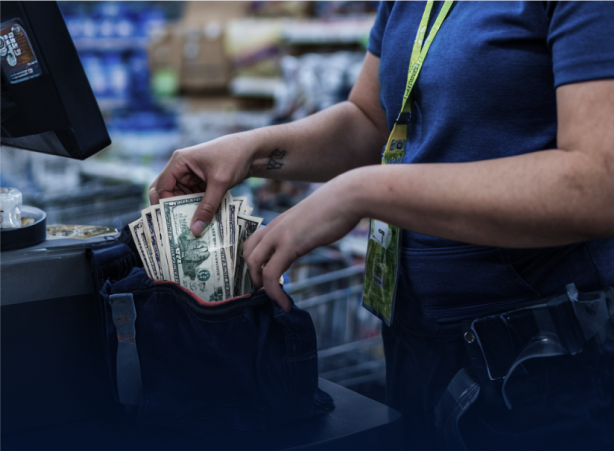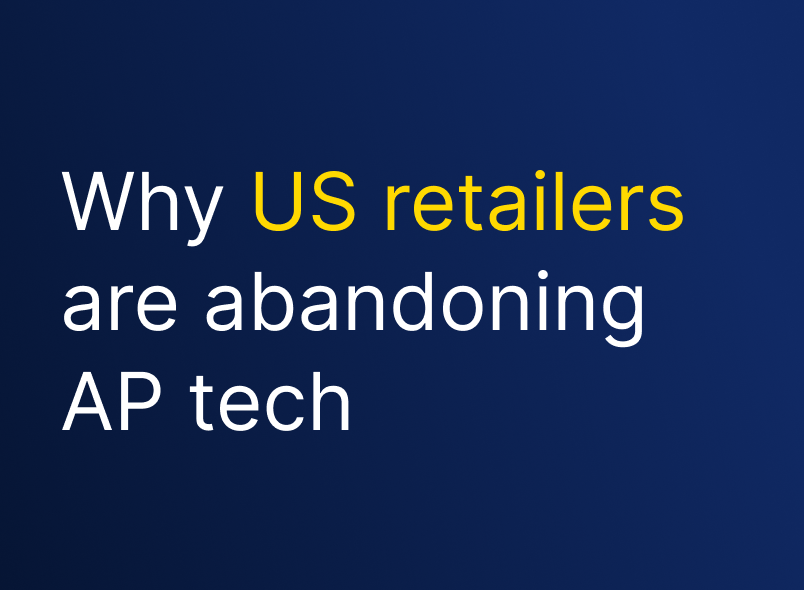Editor's note: This post was originally published in April 2020, refreshed in November 2021, and has now been updated to reflect recent events, changes, and developments.
Retailers and communities are facing a new wave of economic and social difficulties, driven by many pandemic-era challenges of the past few years. On top of that, economists have been predicting a recession for months – especially thanks to indicators like aggressive federal interest rate hikes and bank failures.
Consumers are feeling the financial strain, reflected in dampened consumer confidence in the economy and more cautious spending habits. A May 2023 report found that consumers are overall more pessimistic or uncertain about the economy than they were during the pandemic. In that same report, four out of five consumers said that they’re changing what products they purchase or where they’re shopping.
Many customers from across the world have asked us about the impacts that COVID-19 has had on the AP/LP retail industry, and how businesses are dealing with new crime threats in wake of post-pandemic economic conditions. Retailers are still facing challenges such as a surge in aggression and violence in stores, changes in law enforcement response and legislation, inflation contributing to higher crime rates, rapid growth in online marketplaces, and a continued rise in Organized Retail Crime (ORC).
As a result, businesses need to invest in AP/LP now more than ever, both in response to current trends and in preparation for the future.

Surge in aggression and violence in stores
Shoplifting is sometimes referred to as a “victimless crime.” Unfortunately, we’re finding that’s not the case, as more and more retail incidents are turning aggressive and violent.
According to the National Retail Federation’s 2022 Retail Security Survey, 81% of retailers reported experiencing more violent and aggressive incidents associated with Organized Retail Crime in 2022, compared to 2021. That same survey found that guest-on-associate violence ranked #1 as the threat that has become more of a priority over the past five years, with 77.6% of retailers saying it’s become a more important concern. The two next most important threats were external theft (excluding organized crime) and Organized Retail Crime, at 74.1% and 70.7% of retailers respectively.
Data from Auror’s Retail Crime Intelligence Platform supports this stat from the NRF. We’ve found that serious incidents within retail, such as robberies and assaults, continue to increase, with repeat offenders and ORC groups accounting for a large proportion of this.
While only 1 in 10 shoplifters are repeat offenders, they account for half of all serious events and are four times more likely to be violent or aggressive towards retail team members and customers.
There is growing commentary and calls for support to address the theft-related violence in the United States and United Kingdom, with a new initiative between retailers and police in New Zealand focused on organized and violent retail crimes.
Challenges with police and judicial responses
Repeat people and crime networks are continuing to take advantage of a reduced or delayed police response that stem from pandemic-related resourcing challenges. In fact, most chronic offenders say they are caught just one in every 49 times that they steal, and arrested one in every 100 times. From big box retailers to small business owners, stores are reporting incidents of brazen theft that ultimately goes unpunished.
Part of the problem is that retail theft isn’t prioritized as a crime by the legislature and the courts. Since 2000, at least 40 states have raised the threshold of stolen goods that warrants a felony charge. These felony thresholds are continuing to rise in some states, in part due to pressure from advocates claiming that the laws need to change to account for inflation.
The gradual decriminalization of shoplifting spells out a lack of meaningful consequences for theft, shifting the risk vs. reward equation in favor of offenders. According to the NRF’s 2022 Retail Security Survey, 70.8% of retailers reported increases in Organized Retail Crime in areas where the felony thresholds increased.
In addition, prosecutors in many cities are pleading out or dismissing non-violent crimes to combat enormous backlogs in the criminal justice system caused by COVID-19.
As a result, in order to warrant dedication of police resources to investigating retail theft, retailers often must prove that offenders have stolen more than enough goods to warrant a felony charge. This requires detailed incident reporting and AP/LP tools that can connect the dots between incidents. Some incidents might even occur across separate retailers, a situation where being connected to other businesses could come in handy to solve ORC at scale.
Inflation signals risk of increase in retail crime rates
While many are concerned about inflation and the possibility of economic recession, another outcome that retailers are considering is the impact of economic hardship on crime.
Some experts say current inflation and economic strain has contributed to an increase in retail theft already, especially as lower-income and younger households report feeling the financial strain more heavily.
That opinion is supported by multiple studies of historical data that prove as inflation increases, so do property crime rates and violent crime rates. As one study published in Global Crime summarizes, “Crime rates rise as the inflation rate rises. Because of the lag between price and wage adjustments, inflation lowers the real income of low-skilled labor, but rewards property criminals due to the rising demand and subsequent high profits in the illegal market.”
Disruptions to the global supply chain make it difficult for consumers to reliably get the products they need, and retailers to keep high-demand goods like over-the-counter drugs stocked. Inflation doesn’t help; in fact, it drives up the demand for “discounted,” stolen goods that are resold by offenders.
Auror’s data shows that 30% of offenders leave empty shelves when stealing, showing that ORC groups are intentionally stealing and hoarding essential items en masse to resell.
As consumers look for ways to tighten their budgets and take care of their households, they can easily fall susceptible to buying discounted or low-supply goods that have been stolen.
Impact of regional and national lockdowns
Researchers are still investigating all of the long-term effects of the pandemic and COVID-19 lockdowns, but one trend is evident: Despite long periods of store closures for some retailers, retail crime has continued to increase both in number and ferocity. Widespread burglary and looting has been reported worldwide including in South Africa and the Netherlands in response to lockdown measures.
Data from Auror’s Retail Crime Intelligence platform shows aggressive behavior has increased in some regions by up to 65% when lockdowns have eased, vs. the previous open period. With regions and nations moving in and out of lockdowns as new COVID-19 variants emerged and spread throughout communities.
AP/LP teams are constantly needing to prepare and refine their responses to secure their teams. The above environment only encourages people who offend to show aggressive behavior, as they know the store team will back down and allow them to leave uninhibited.
The rise of online marketplaces
When COVID-19 temporarily shuttered brick-and-mortar stores and restaurants across the country, there were concerns that the pandemic spelled the death of the retail industry. However, the opposite was true: Retail sales have increased year-over-year at a rate beyond pre-pandemic levels, thanks in part to the meteoric rise of e-commerce.
Online marketplaces such as Amazon thrived throughout the pandemic and beyond, supplying everything from toilet paper to home office goods. A majority of Amazon’s sales (58%) are through third-party sellers. More than 200,000 new third-party sellers globally began selling on Amazon in 2020, with the value of its third-party seller services growing about 24% year-over-year.
The problem is ORC groups and criminals can easily offload stolen merchandise in mass quantities through online marketplaces, with few consequences due to lack of oversight.
Congress recently passed The INFORM Consumers Act, which requires online marketplaces to collect and verify bank, contact, and tax information from high-volume third-party sellers. Meanwhile, Meta, eBay and Amazon are taking steps to combat Organized Retail Crime in tandem with legislators and retailers.
However, as these measures are still being developed and refined, repeat people and ORC groups will continue to profit without consequence.
Organized Retail Crime reaches epidemic levels
The above conditions have not only assisted ORC groups, but have encouraged the risk vs. reward scales to tip in their favor. ORC is on the rise — 52.9% of retailers responding to the NRF’s 2022 Retail Security Survey said that ORC had increased. Retailers should be less concerned about the occasional shoplifter than these ORC groups.
How are retailers responding to ORC? Some stores are locking up products behind barriers to discourage theft, causing frustration to shoppers and increasing workload for front-line team members. Others are taking action for the good of their customers and communities, partnering with solution providers like Auror to revolutionize how they handle ORC in their stores. One eye-opening case study is Operation Proof of Purchase, presented at the Global Retail Crime Summit: A $50M resolved case against a sophisticated ORC operation targeting over-the-counter drugs and health & beauty products. IT demonstrates just how large-scale of a problem ORC has become, and proves that retailers still have options available to them when it comes to AP/LP.
You can’t solve an ORC problem you don’t know you have. Without employing Retail Crime Intelligence, you might just chalk up disappearing products to casual, one-time shoplifters. But if you implement solutions that help you connect the dots, you can find the root cause of your loss that much more easily.
Loss Prevention is key to surviving and thriving in tough economies
AP/LP has been critical to helping retailers survive what, hopefully, was the worst of the pandemic, but we’re seeing that it’s also key to thriving in the future. As socioeconomic conditions change and evolve, businesses need to be prepared to employ innovative strategies, including AP/LP, to protect their stores, teams, and customers—especially as Organized Retail Crime only continues to scale in size and effort.
What might qualify as a “petty theft” of $500 in goods might feel anything but “petty” for the business incurring such a loss. A loss of $500 at a 5% profit margin could require over $10,000 in sales to make up the difference. On the flip side, preventing a loss of $500 means $10,000 in sales that goes straight to your bottom line, instead of soaking up shrink.
With this in mind, let's take closer look at the impact a prolific shoplifter or organized crime group could have on your organization:

*For a retailer with a 5% Net Profit Margin
Formula: (Stolen amount ÷ profit margin %) × stolen amount = equivalent sales
According to the NRF’s 2022 Retail Security Survey, external theft was the leading source of shrink, followed by internal theft. With shrink causing the retail industry to hemorrhage nearly $100 billion in loss in 2021, it’s high past time for retailers to take AP/LP more seriously.
Without dedicated AP/LP resources, retail crime could be the differentiator between retailers that are able to survive and thrive through an unusually tough economic climate—and those that are forced to shutter their stores.
Rest assured that the future of AP/LP is bright. Emerging technology has empowered retailers to mobilize and share information more efficiently with a connected ecosystem of trusted partners and law enforcement. We’re seeing retailers reduce shrink, prevent millions of dollars of loss, save time on incident reporting, and close ORC investigations more quickly.
Like any medical issue, you want to treat the disease, not just the symptoms. Loss prevention is no different; retailers should seek to identify the people, groups, and trends responsible for retail theft. Auror empowers retailers and law enforcement to do that.
Subscribe to The Intel for the latest news and developments in Retail Crime Intelligence.






.png)
.png)